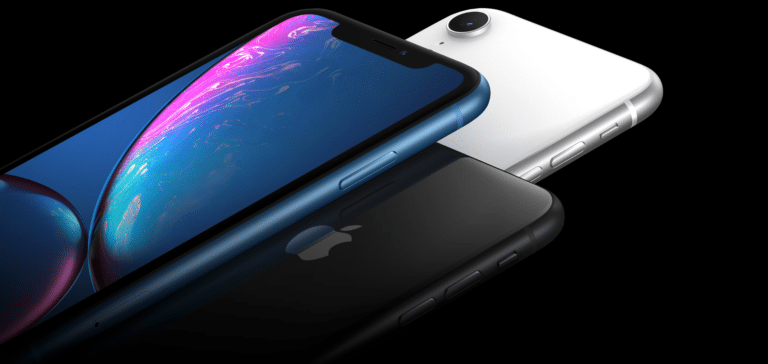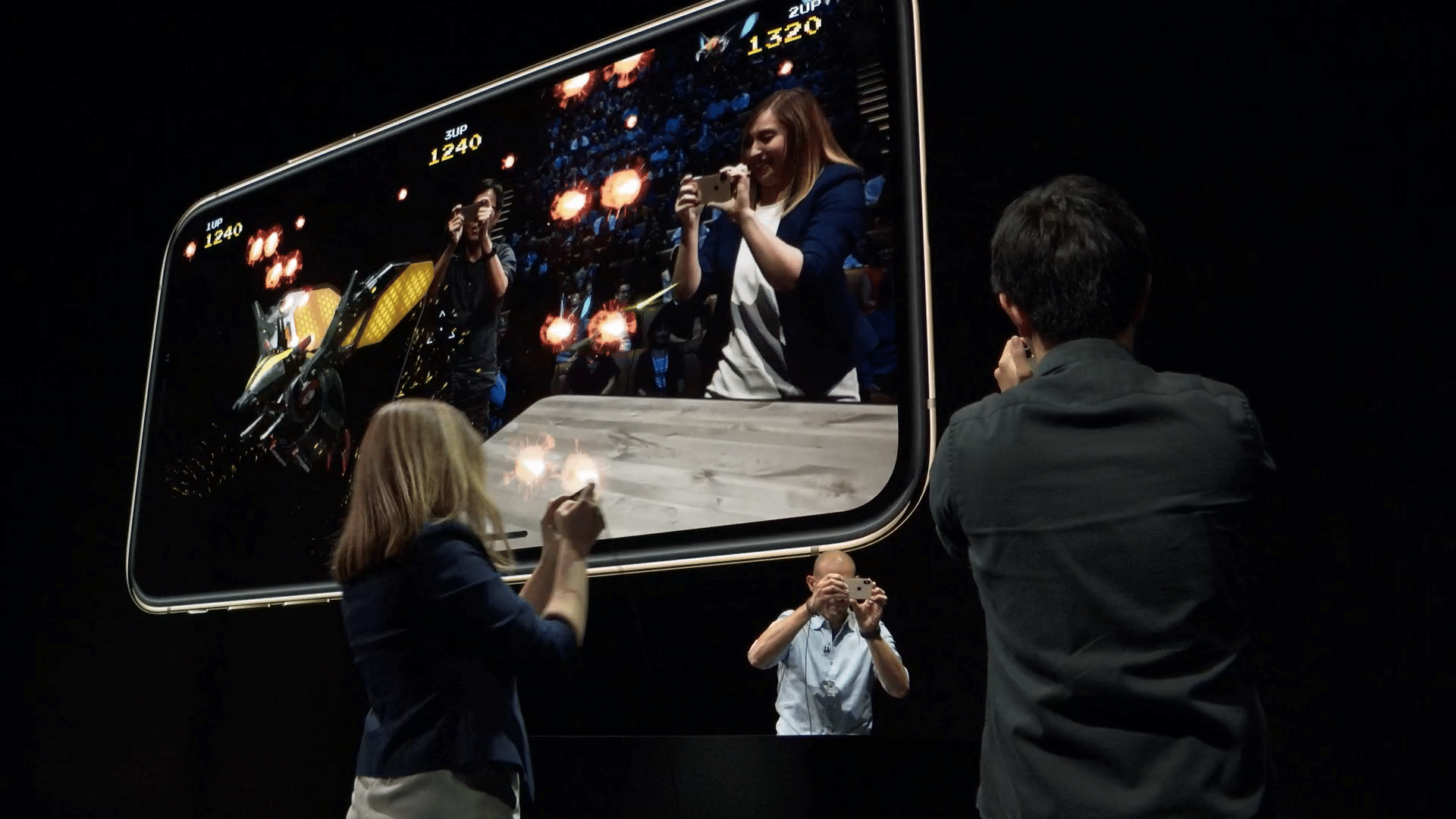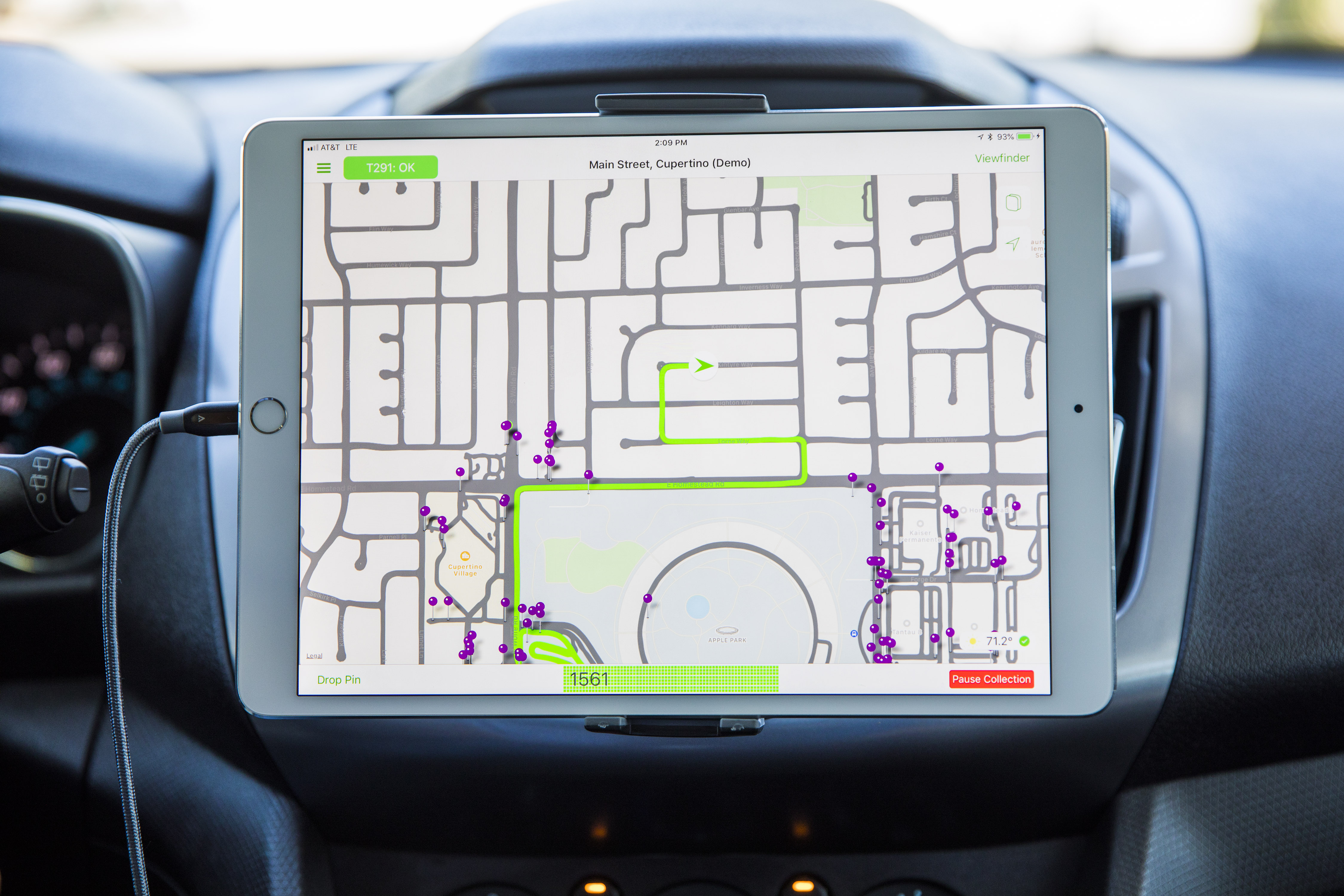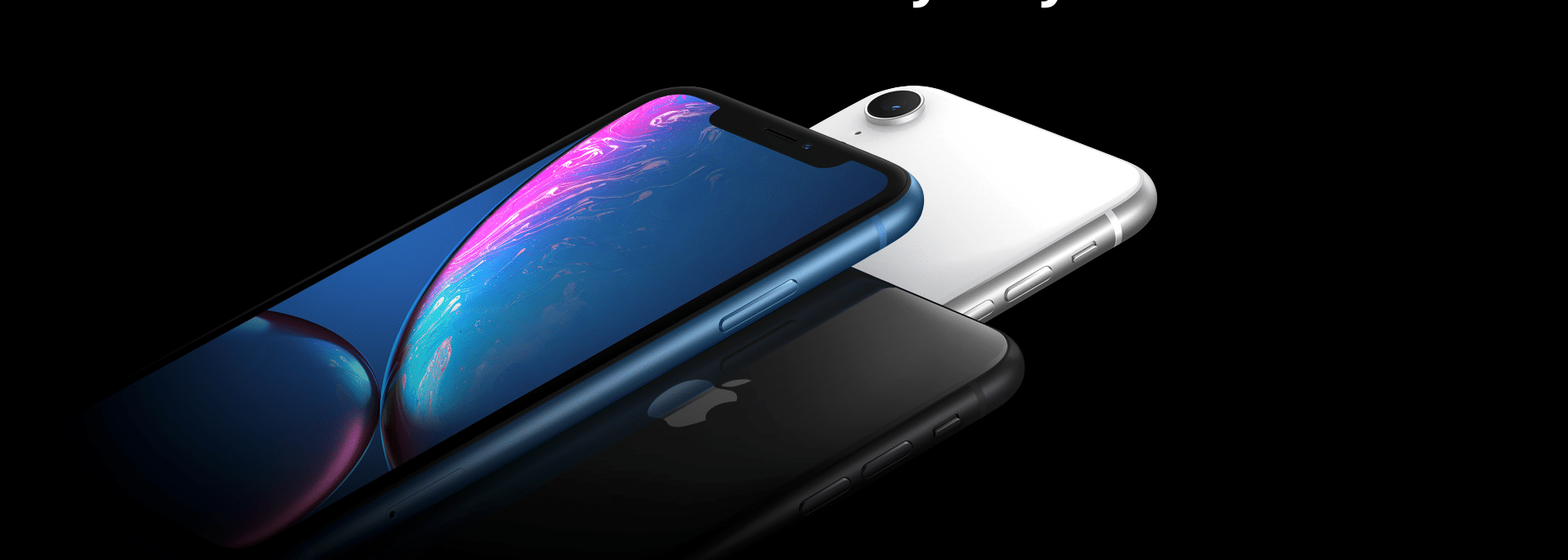
This post is adapted from ARtillry’s latest Intelligence Briefing, AR Business Models: The Top of the Food Chain, Part I. It includes some of its data and takeaways. More can be previewed here and subscribe for the full report.
Of all the tech giants ARtillry Intelligence tracks, Apple has possibly exhibited the greatest levels of excitement and investment in AR. As we’ve done with other players, we’ll ask the key question of “why?”… Why is Apple investing so heavily in AR?
But before getting to the why, let’s establish the what. Apple’s AR moves include launching an AR development kit for iOS apps, tuning its hardware design for AR optimization, a 3D mapping initiative with AR implications, and rumors of forthcoming smart glasses.
Back to the why, it’s a similar answer heard throughout our latest report: to protect, grow and pave a future path for its core business. Though its maturing iPhone business compels Apple to diversify into services like iTunes, the core product is hardware, where it sees the most profit.
Here, the company has a short and long-term vision. Near term, maturing iPhone sales drive Apple to find ways to make it sexy again, boost unit sales and justify premium pricing on higher-end models like the iPhone Xs. AR also drives app store revenues, including in-app purchases.
“We believe AR can enable profound experiences and Apple is uniquely positioned to provide the best AR experience because of the seamless integration of our hardware and software,” said CEO Tim Cook in Apple’s Q3 earnings report in July, invoking AR’s “limitless potential.”

The Long Game
Apple’s longer-term plan involves smart glasses. These could be its post-iPhone “hero device.” But Apple knows it has to get over adoption humps that have plagued face-worn hardware like Google Glass and Snap Spectacles. Mobile AR’s job is therefore cultural acclimation.
In other words, Apple will have several challenges in selling smart glasses. One is style and cultural acceptance for glasses. The other is convincing consumers that AR in general is magic. That second job is where ARkit has 2-3 years to wow the world on AR’s appeal and utility.
Beyond consumers, Apple incentivizes developers with a large mobile AR marketplace, thereby creating a training ground for AR. So it hopes developers master AR in time for the smart-glasses era. Their apps will make or break glasses’ must-have status and iPhone-like utility.
This brings Apple closer to establishing what comes after the iPhone as its next cash cow. Interestingly, this strategy involves refining the software (apps), before the hardware’s launch. Given AR glasses’ many challenges, this strategy pre-empts at least one of them: content.
Meanwhile, Apple will also continue to make moves to democratize AR app creation and the use of ARkit for developers. The recently-launched USDZ file format offers drag and drop functionality, compatible with prevalent creative tools such as Adobe’s Creative Cloud.
“You’ll be able to bring in images, videos, text, any object from Creative Cloud directly into a native AR environment,” said Abhay Parasnis, EVP and CTO of Adobe at WWDC. “In fact, for the first time with Creative Cloud and iOS, there’s ‘what you see is what you get’ editing in AR.”

The What
As for the types of apps and use cases that could drive smart glasses’ value and utility, those will vary and be determined by third-party developers. But they could be seeded by Apple’s own batch of apps, just like the iPhone 1 was (think: maps, photos, weather, messaging, etc.).
For example, Apple is currently in the process of generating its own mapping data for its Apple Maps app. As part of that mission, it’s creating 3D spatial maps, which could be a move towards AR cloud data that supports app functionality on smartphones and, eventually, glasses.
It’s also seeding social experiences. As with Google’s Cloud Anchors, Apple likewise supports multi-player “synchronous” AR experiences. This lets developers create AR graphics that are synced across several users, thus unlocking new social and gaming possibilities.
Developers are already building multi-player AR apps where all players see the same graphics, positionally tracked and synchronous. For maximum scalability, some combination of live multi-player play, plus networked play with remote players could create an AR sweet spot.

The When
And of course, there’s the pastime of tracking acquisitions to extrapolate functionality we may see in prospective Apple Smart Glasses. That growing batch of companies includes Metaio, Primesense, Flyby Media, and Akonia, which develops waveguide lenses for AR glasses.
One thing is for fairly certain, which is that the use cases will be consumer-oriented to stay true to Apple’s DNA. That compares to Microsoft — likewise staying true to its DNA — which continues to position its Hololens AR headset as an enterprise-geared device.
As for timing, 2020 rumors could be optimistic, given engineering feats to make smart glasses consumer-friendly and stylistically-marketable. Given the cycles of Moore’s Law required for meaningful leaps in size, cost and power efficiencies, we believe it will be closer to 2021-2022.
Frequently-accurate Apple analyst Ming-Chi Kuo of TF International Securities predicts 2020, while longtime Apple watcher Gene Munster moved his prediction from 2020 to 2021. “Services, AR, and Apple Car will create Apple’s next trillion-dollar market cap,” said Kuo recently.

Nearer-Term Viability
In addition to graphically oriented AR — the modality in which it’s mostly discussed — we have a longstanding prediction that Apple could be developing the nearer-term viability of another AR format: sound. This involves informational overlays that are sound waves instead of photons.
In other words, it’s about getting informed about your surroundings through an ambient whisper instead of graphics. First, Apple has to condition the use case through an all-day wearable. But fortunately, it’s already doing that with one of its most successful products in years: AirPods.
Then it has to seed the content marketplace with enough substance to make it worthwhile. Right now that means Siri, which isn’t going to cut it. But third-party developers could populate an audio app marketplace. Those apps, like ARkit apps, could have a headset-based endgame.
Logical apps include local information (think: audio tours and Yelp reviews), or background information about people you meet (think: LinkedIn). We call it “AR Audio” and one advantage is discreetness, which sidesteps smart glasses’ style hurdles and could mean nearer-term viability.

For deeper XR data and intelligence, join ARtillry PRO and subscribe to the free ARtillry Weekly newsletter.
Disclosure: ARtillry has no financial stake in the companies mentioned in this post, nor received payment for its production. Disclosure and ethics policy can be seen here.
